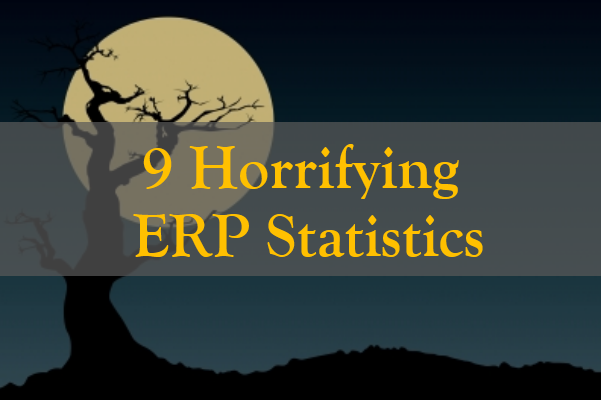9 VERY Scary ERP and ERP System Implementation Statistics
Last Halloween we shared with ERPVAR blog readers a blog that outlined 7 ways to survive and ERP implementation and a horror movie- two situations...

 Upgrades don’t happen every day, every year, or even every other year, but when they do happen, they have a huge impact on your organization. Which is why it is important to make sure you do it right, spend as little money as possible, and maximize the benefits, right? First, let’s get a few things into the open… ERP upgrades are a headache. This article won’t be about how to make your upgrade perfect, painless, or even inexpensive; Upgrades are stressful and take an investment of not only money, but time too. With all of that being said, there are a number of things you can do that won’t necessarily make the headache go away, but will help dull it down significantly by keeping the upgrade within your budget, within your time frame, and cause as little disruption as possible.
Upgrades don’t happen every day, every year, or even every other year, but when they do happen, they have a huge impact on your organization. Which is why it is important to make sure you do it right, spend as little money as possible, and maximize the benefits, right? First, let’s get a few things into the open… ERP upgrades are a headache. This article won’t be about how to make your upgrade perfect, painless, or even inexpensive; Upgrades are stressful and take an investment of not only money, but time too. With all of that being said, there are a number of things you can do that won’t necessarily make the headache go away, but will help dull it down significantly by keeping the upgrade within your budget, within your time frame, and cause as little disruption as possible.
Upgrades do not happen often, but when they do, they stand to significantly impact your company. It is up to you and your ERP vendor to help make sure that impact is a positive one. By considering the above points, we think you will be well on your way to success.
The above points only represent a handful of the most common success factors in an ERP upgrade, there are many more. What other factors are important to consider? What are some common mistakes to avoid? Feel free to share your thoughts in the comments below!
e2b teknologies provides ERP, accounting applications, custom cloud-based software development services, accounts receivable management software, and calibration services through its three business units – e2b anytime apps is the publisher of Anytime Collect accounts receivable management software, Anytime Assets, Anytime 500, and related Anytime brand products. e2b enterprise develops custom cloud-based business applications and resells leading ERP accounting software and other enterprise business software applications from Sage Software, Epicor, Sugar CRM, and other publishers. e2b calibration is an ISO/IEC 17025 accredited calibration laboratory.

Last Halloween we shared with ERPVAR blog readers a blog that outlined 7 ways to survive and ERP implementation and a horror movie- two situations...

What’s Next with Your ERP Upgrade in 2015? It’s the New Year and there are many people making predictions about what’s in store for us in 2015. When...

1 min read
Learn 3 ERP Upgrade Tips from Zobmies As an ERP consultant that helps customers with ERP upgrading, implementations, training and support, it’s easy...